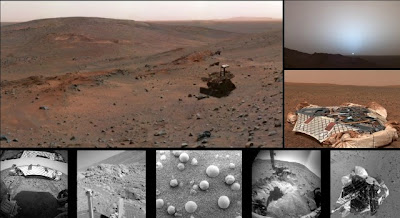The Morocco discovery is one of great excitement because this is only the 5th time scientists have confirmed alien meteorites along with witnesses of it falling from the sky. 6 months ago, the sudden burst of fire was spotted in the sky, however, the rocks were not discovered on the ground in North Africa until the end of December.
This is the inside of the first meteorite from Mars that was discovered.
Scientists and other staff involving the fallen meteorites are excited because already, the meteorite is accumulating large sums of money because it is among the rarest items on Earth, more so than gold. Meteorite experts and NASA scientists confirmed that 15 pounds of rock have reently been collected from Mars. Astronomers believe that millions of years ago, something large collided with Mars, sending rocks into the solar system. After a long journey through space, one of the rocks got stuck in Earth's orbit and split into smaller pieces as it fell.
Many other meteorites stayed on the Earth's surface for several decades, even millions of years before they were discovered. At this point, they were contained with Earth materials and life. However with these recent rocks, although they were on our surface for several months, are purer than past discoveries. The last time a fresh meteorite fell to Earth was in 1962.
"It's incredibly fresh. It's highly valuable for that reason," said Carl Agee, director of the Institute of Meteoritics and curator at the University of New Mexico. "For someone who knows their Martian, this is a beauty. It's gorgeous."
In terms of martian meteorites that we know of, they only occur once every 50 years- 1815 in France, 1865 in India, 1911 in Egypt and 1962 in Nigeria. Therefore, this discovery is a once-in-a-career or even once-in-a-lifetime event.
Check out this Youtube video of the 2011 Moroccan meteorite!
http://www.youtube.com/watch?v=-mfsZ74T9ko


















